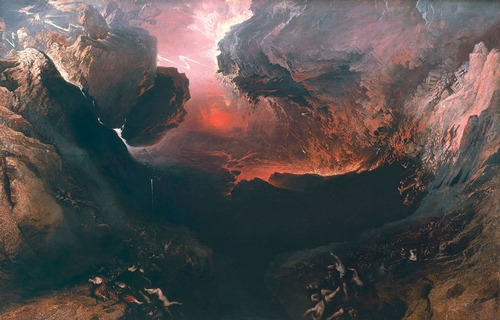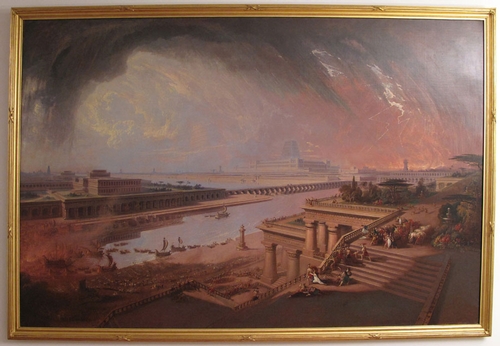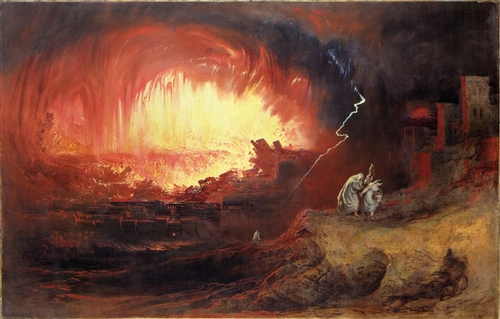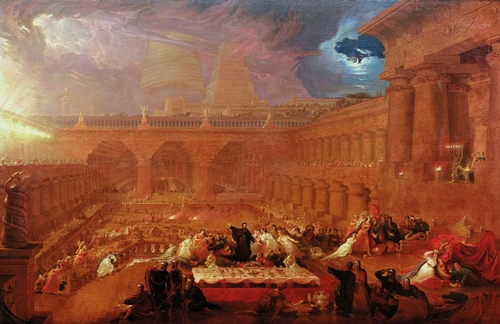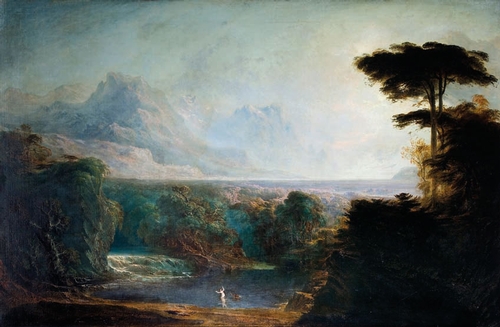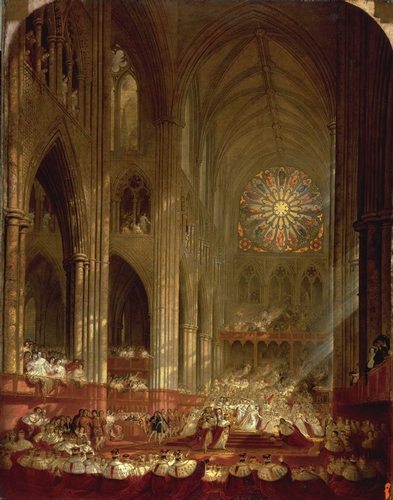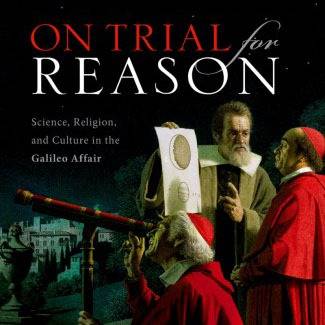Perhaps the biggest disappointment of the predicted 21 May apocalypse was the advertising. Maybe a few more souls could have been swayed to repent this spring if Harold Camping and his followers had just splurged for more gripping billboards proclaiming the end of days. After all, the apocalypse only comes around once (unless you’re Camping, who’s now prophesying our October demise).
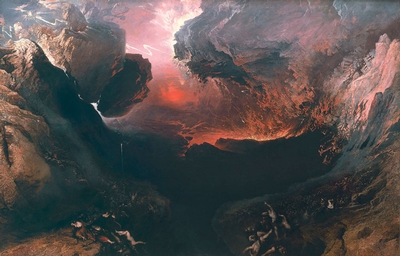
Despite being sniffed at by contemporary critics, Ruskin among them, Martin was immensely popular in his time, and audiences queued up in droves for the opportunity to be swept up in the tempest of destruction in Belshazzar’s Feast (1820), or to experience the vertiginous pull of The Great Day of His Wrath (1851-53). The latter work, completed a year before the artist’s death, all but inhales the viewer, leaving us teetering on the edge of the frame as we peer into the painting’s central chasm. There is no safe distance from which to observe the naked sinners grappling against each other and the sliding rubble. We are equally in danger of joining them in Hell.
Titillating with the thrill of unmasterable forces and expansive vistas, Martin is every bit the Romantic, probing the power of the sublime. Paintings such as Belshazzar’s Feast or The Great Day of His Wrath allow us to play at feeling puny and overwhelmed, before returning us to a position of control. But is it simply this initial shudder of the sublime that prickles our nape before one of Martin’s apocalyptic canvases? Does he merely offer us an alternative version of Turner, with sharper fangs and a darker palette?
As much as the spectacle of Martin’s works enthralls us, we can’t divorce the style of these paintings from their religious subjects. We miss the boat – literally – if we don’t recognise, or don’t admit, that part of what’s so terrifying about The Deluge (1834) is the implicit power which Martin gestures to behind the canvas: a God willing to “destroy from under heaven all flesh in which is the breath of life” (Genesis 6:17), and willing to do so again in The Great Day of His Wrath, according to the Book of Revelation.
For some viewers, what is most frightening about such narratives of divine vengeance is the historically dubious uses to which they have been put. The theologian in me, however, suspects something else as well. Could it be that we miss the surety of a God willing to enter so emphatically into history, even if only to smite us? Or, just as vertigo is the fear of jumping as much as falling, do our responses to the apocalyptic reveal our desire to hasten the end as much as retreat from it?
We could probably get along just fine without the silly numerology of Camping and other evangelists, but perhaps we need the apocalypse – a crisp and horrible vision of it – more than ever. As much as it distorts the future, eschatology also draws the present into focus, magnifying our darkest anxieties and capabilities. We might disagree about its shape, but if we look closely there is always a beast, as Yeats put it, “slouch[ing] towards Bethlehem to be born.”
John Martin: Apocalypse is at Tate Britain, London, 21 September 2011 – 15 January 2012. All images here courtesy Tate Britain.
